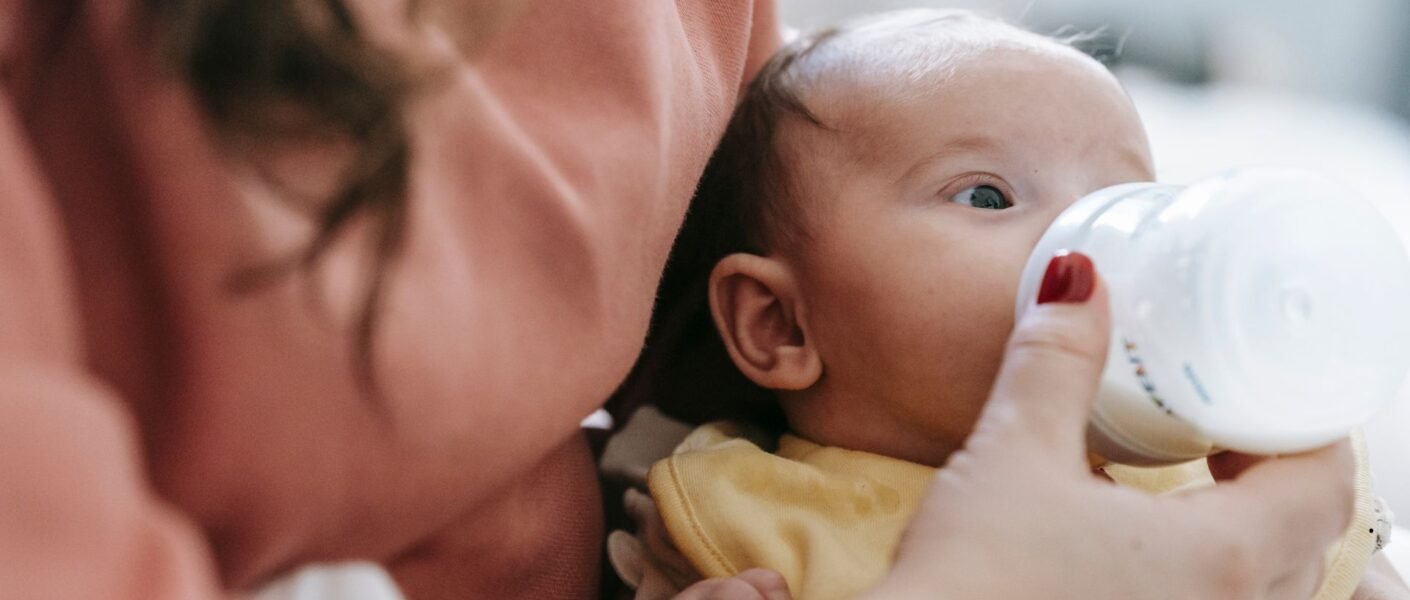Choosing the right baby bottle can feel overwhelming. The sheer number of options available – different materials, shapes, nipple types – can leave even the most prepared parent feeling lost. One option that’s been making a strong comeback is the glass baby bottle. Often associated with older generations, glass bottles are experiencing a resurgence in popularity, and for good reason. But are they the right choice for your family?
This comprehensive guide will dive deep into the world of glass baby bottles. We’ll explore their advantages, acknowledge their potential drawbacks, and compare them head-to-head with the more common plastic and silicone alternatives. By the end, you’ll have the knowledge you need to make an informed decision about what’s best for your little one.
Why Choose Glass? The Benefits of Glass Baby Bottles
Glass baby bottles offer a unique set of advantages that appeal to many parents, particularly those prioritizing health, environmental consciousness, and long-term value.
1. Purity and Peace of Mind: The Health Angle
- Chemically Inert: This is the big one. Glass is a non-reactive material. Unlike some plastics, it doesn’t leach chemicals, even when exposed to heat. You can be confident that your baby’s milk or formula is free from potentially harmful substances like BPA (Bisphenol A), BPS (Bisphenol S), phthalates, and other endocrine disruptors.
- No Taste or Odor Transfer: Glass is non-porous. It won’t absorb smells or flavors from previous feedings or cleaning solutions. This ensures that each bottle tastes fresh and clean, which can be particularly important for babies who are sensitive to subtle taste differences.
- Easy to Sterilize, Truly Clean: The smooth, non-porous surface of glass makes it exceptionally easy to clean and sterilize thoroughly. You can be confident that you’re removing all milk residue and bacteria, reducing the risk of illness. Glass can withstand high temperatures without degrading, making it suitable for various sterilization methods.
2. Sustainability and Long-Term Value
- Eco-Friendly Choice: Glass is a highly sustainable material. It’s 100% recyclable, and the recycling process is efficient. Choosing glass over disposable or less durable options helps reduce your environmental footprint.
- Exceptional Durability: While glass can break (more on that later), a well-cared-for glass bottle can last for years, potentially even through multiple children. This makes them a cost-effective choice in the long run, despite a potentially higher initial investment.
- Heirloom Potential: There’s something special about a glass bottle. They can become cherished items, passed down through families, connecting generations.
3. Practical Advantages
- Heat Resistance: High-quality glass baby bottles are made from borosilicate glass (more on this crucial point below). This type of glass can withstand extreme temperature changes without cracking or shattering. You can safely move them from the freezer to warm water, or vice versa.
- Wide Compatibility: Most glass baby bottles are designed to be compatible with a wide range of nipples, lids, and accessories from various brands. This gives you flexibility and makes it easier to find the perfect combination for your baby.
The Potential Downsides: Addressing Concerns About Glass Baby Bottles
While glass bottles have many compelling advantages, it’s important to acknowledge their potential drawbacks. Being aware of these concerns allows you to make an informed decision and take appropriate precautions.
1. The Breakage Factor
- Fragility: This is the most obvious concern. Glass is inherently more fragile than plastic or silicone. A drop onto a hard surface can result in breakage, posing a risk of sharp edges.
- Weight: Glass bottles are heavier than their plastic or silicone counterparts. This can make them more difficult for younger babies to hold independently and can also be a consideration for parents carrying multiple bottles.
2. Cost Considerations
- Higher Initial Price: Glass bottles typically have a higher upfront cost compared to plastic bottles. However, as mentioned earlier, their durability can make them a more economical choice over time.
3. Limited Style Options (Potentially)
- Fewer Design Choices: While the market for glass baby bottles is growing, you might find fewer options in terms of colors, shapes, and whimsical designs compared to the vast array of plastic bottles available. However, this is becoming less of an issue as glass bottles increase in popularity.
Glass vs. Plastic vs. Silicone: A Head-to-Head Comparison
To provide a clear picture of how glass baby bottles stack up against the competition, let’s compare them directly with plastic and silicone options:
| Feature | Glass Baby Bottles | Plastic Baby Bottles (BPA-Free) | Silicone Baby Bottles |
|---|---|---|---|
| Safety | Inert; no chemical leaching; BPA-free, phthalate-free. | BPA-free (if labeled as such), but may contain other potentially concerning chemicals; microplastic concerns exist. | Generally considered safe; BPA-free; usually made from medical-grade silicone. |
| Cleanliness | Very easy to clean and sterilize; non-porous; doesn’t retain odors or flavors. | Can be more difficult to clean thoroughly; may retain odors and flavors over time. | Easy to clean, but may absorb odors and flavors over time. |
| Durability | Highly durable with proper care; can last for years. | Less durable; prone to scratches, cracks, and degradation over time. | Durable, but can tear or puncture with sharp objects. |
| Sustainability | Excellent; 100% recyclable. | Some plastics are recyclable, but many end up in landfills; plastic production has a significant environmental impact. | More sustainable than plastic, but silicone recycling is not as widespread as glass recycling. |
| Breakage Risk | High; can break if dropped. | Low; more resistant to breakage. | Very low; highly resistant to breakage. |
| Weight | Heavier. | Lighter. | Lightweight. |
| Cost | Typically higher upfront cost. | Typically lower upfront cost. | Can vary, but often more expensive than plastic. |
| Heat Resistance | Excellent (borosilicate glass); can withstand extreme temperature changes. | Varies depending on the type of plastic; some may not be suitable for high heat or rapid temperature changes. | Good heat resistance. |
| Taste/Odor | No taste or odor transfer. | May absorb tastes and odors. | May absorb tastes and odors. |
Making the Right Choice: It’s Personal
There’s no single “best” baby bottle material. The ideal choice depends on your individual priorities, your baby’s needs, and your lifestyle.
- Prioritize Health and Purity Above All Else? Glass is the clear winner.
- Worried About Breakage and Need Something Lightweight? Silicone might be a better fit.
- On a Tight Budget and Need Something Readily Available? BPA-free plastic could be a temporary solution.
Understanding Borosilicate Glass: The Key to Safety and Durability
Not all glass is created equal. When choosing glass baby bottles, it’s essential to look for those made from borosilicate glass. This is a specialized type of glass that’s significantly more durable and resistant to thermal shock than regular glass.
Why Borosilicate Glass is Superior:
- Thermal Shock Resistance: This is the most important benefit. Borosilicate glass can withstand sudden temperature changes without cracking or shattering. This means you can safely take a bottle from the refrigerator and warm it without fear of breakage.
- Increased Durability: Borosilicate glass is more resistant to scratches and minor impacts than regular glass.
- Chemical Resistance: Like all glass, it’s chemically inert, but borosilicate glass is even more resistant to chemical degradation.
Always check the product description and packaging to ensure the bottle is made from borosilicate glass. This information should be clearly stated.
Caring for Your Glass Baby Bottles: Maximizing Lifespan and Safety
Proper care and handling are crucial for ensuring the safety and longevity of your glass baby bottles.
- Cleaning: Wash bottles thoroughly after each use with warm, soapy water. Use a bottle brush to reach all areas, including the nipple and any crevices.
- Sterilizing: Sterilize bottles regularly, especially during the first few months of your baby’s life. You can use a steam sterilizer, boiling water, or a microwave sterilizer.
- Inspection: Regularly inspect bottles for any signs of chips, cracks, or damage. Discard any damaged bottles immediately.
- Handling: Handle glass bottles with care, avoiding drops and impacts. Consider using silicone sleeves or protective covers to provide an extra layer of cushioning.
- Storage: Store clean, dry bottles in a clean, covered container.
- Warming: Warm milk or formula gently. Avoid using the microwave directly on the glass bottle, as this can create uneven heating and potential hotspots. A bottle warmer or a bowl of warm water is recommended.
- Never Prop: Never prop a bottle for your baby. Always hold your baby during feedings.
Conclusion: Making an Informed Choice
Glass baby bottles offer a compelling combination of health benefits, sustainability, and long-term value. While the risk of breakage is a valid concern, choosing borosilicate glass bottles and practicing careful handling can significantly mitigate this risk.
By understanding the advantages and disadvantages of glass compared to plastic and silicone, and by following the care guidelines outlined above, you can make a confident and informed decision about the best feeding option for your baby. Remember to consult with your pediatrician or a lactation consultant if you have any specific concerns or questions.
I’m Cris Coelho, and motherhood has transformed my life!
As a speech therapist and early childhood educator, I’ve always been passionate about child development. But it was becoming a mother that truly opened my eyes to the real challenges and joys of this journey.
Here at Materníssima, I share everything I’ve learned — blending professional knowledge, real-life experience, and a heartfelt touch.
You’re very welcome here! 💕






